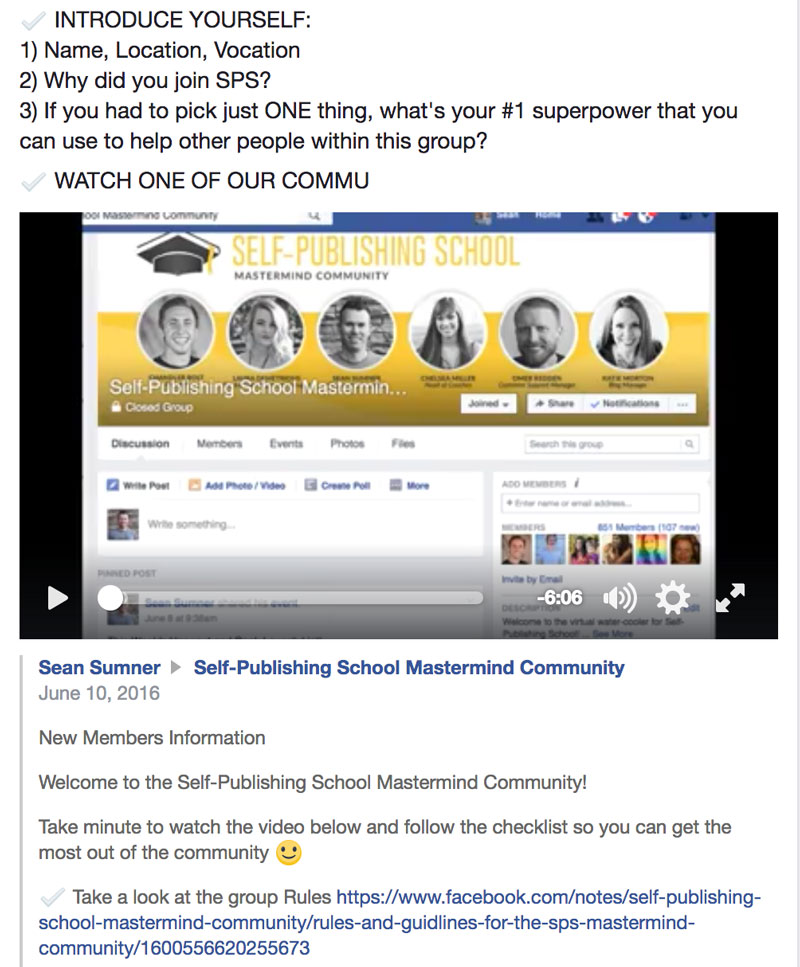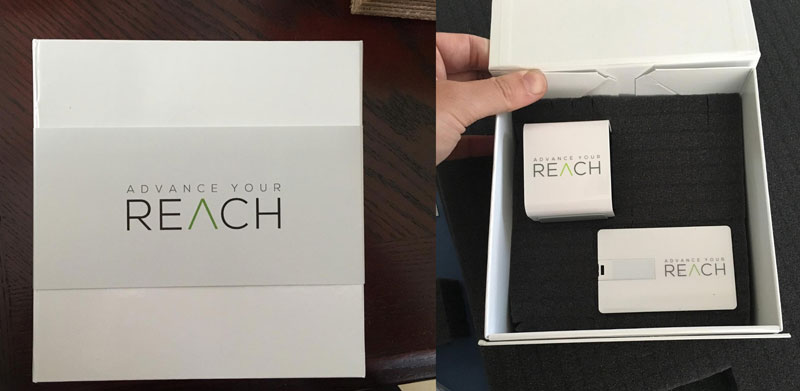Building an engaged Facebook community can help build your brand and extend your reach. The community itself is a critical marketing channel. Group members help each other get the most out of your products, driving its value up with little additional investment on your end. On top of that, members are loyal to your product, deeply engaged, and likely to promote your products outside of the group walls.
Where is Your Community?
There are a lot of tools out there for creating a community, from simple message boards and forums, to Slack, to custom-built paywall websites. But what about Facebook?
Facebook is powerful. Your community is already there, waiting to be engaged. They check in regularly, and they’re comfortable scrolling through posts and jumping into discussion threads. There are other tools that work well for community building, but Facebook has the lowest barrier to entry for your users.
To Paywall or Not To Paywall
These communities come in two flavors: paid and unpaid. In an unpaid Facebook community, group membership is open to anyone interested in the product, and group members stick around for as long as they’d like. Paid Facebook communities are closed groups, requiring monthly or annual dues to join.
Unpaid communities can be great for building your brand and extending your reach on social media. Members don’t feel particularly invested in the group content and goals, and might not interact regularly. However, the more you can drive value in the group content, the more engaged your members will be, and the more likely they’ll stay in the group and stay connected to your brand.
A paid Facebook community is an especially excellent way to build a consistent recurring revenue stream. Monthly dues can be relied on in a way that one-time product launches can’t, and they provide the stability that you can use to take other business risks. Churn is even more critical here because each lost member is a blow to your revenue.

But how do you keep users engaged? We talked to Sean Sumner at Self-Publishing School about the techniques they’ve used to grow a community of over 1,000 paying monthly members.
Your Keys to Building a Great Facebook Community
1. Prevent Overwhelm
“The number one reason people leave these programs is overwhelming, too much content, too many contacts, not knowing what’s right for them,” Sean explains. They’re overwhelmed, and unsure where they fit in. Sooner or later, they give up on trying to find what’s relevant and just leave the group.
This is a theme that you’ll see keep coming up in the keys below, and it needs to be baked into your strategy from the beginning. Think about the purpose of your community and the journey that each community member is on. You might even diagram this. If you’re starting a community for new entrepreneurs, for example, you’ll have some people who’ve just come up with their first business idea, and others who have had their business up and running for a year and trying to figure out how to do their taxes. Those two members are going to be interested in different content.
Find ways to tag or organize content so that each user knows which posts are relevant to them. Make sure your round-ups or highlight posts delineate wherein the journey each featured post fits.
This should apply both inside and outside of the Facebook community. Keep your customers oriented within your product. Many training courses use level numbers or course numbers to do this, or you might use descriptive titles or named goals. It all depends on your business and your customers. Use that same terminology in your community and encourage posters to do the same. That’ll keep everyone on the same page and prevent fatigue, letting community members skim past irrelevant posts.
2. Drive Value
What does your community do for its members? If you don’t know the answer immediately, your community members don’t either. If they’re not getting value, they’ll leave.
“A community is a two-way conversation. A living, breathing thing. Extremely interactive. Social,” explains David Garland in The Rise to the Top blog. Active engagement is key. Does your community support a product, so that community members can ask each other clarifying questions? Does it support a course, offering a space for additional discussion and interaction? Is it a product itself, with experts giving advice to novices?
A great community can feel like friends, or even like a family, where members get to know each other and support each other. But ultimately, members need to feel that they’re getting a benefit. That benefit might just be moral support, but the strongest communities offer more to keep their members coming back.
When you’ve figured out what value your community offers, encourage engagement that drives that value. This might be as simple as throwing some good social media juju at a poster who provides a great answer to a question, by giving it a like, posting a thumbs-up, or calling them out in a weekly update to the community.
3. Be Consistent
A consistent weekly schedule prevents overwhelm and keeps your group organized. Some community members will post at all hours of the day and night – which, by the way, is exactly what you want them to do! But others will worry that if they’re not constantly checked in, they might miss something. They get fatigued trying to constantly monitor the message boards. On top of that, spending too much time on the Facebook community boards makes it harder to work towards the goals that they had in mind when they joined in the first place.
Have your moderators track the best posts throughout the week. Then post a weekly digest of the top posts, and keep it on a regular schedule – say, Monday at 10 a.m. Group members will learn that they’ll still get the most valuable content even if they aren’t checked in 24/7.
Think of other content that would be useful in a weekly schedule. Live Q& A sessions. User highlights. Posts welcoming new users. A weekly leaderboard of top users. Self-Publishing School rolls several of these into their Weekly Bulletin. They use the weekly bulletin to shoutout their top group members, announce book launches, and provide important group updates or plug other top content. Members know to look out for it and know that they don’t have to worry about missing anything important. Your weekly schedule will put your best content front and center, showing off the value of the group and preventing fatigue.

4. Enforce the Rules…
Post a list of clear, simple, important rules somewhere easily accessible in your group. It might be in a pinned post, or in the group description. Then enforce them.
At first, it’s tempting to let freewheeling, off-topic discussions creep into your boards. You think, ‘People are here, in my group, being social and making friends! Great!’ But ultimately, it will drive users away. They’re in your group because they’re interested in the group topic, and they’ll only stay if they see valuable, relevant content. If they feel that their time is being wasted by off-topic (or worse, off-color) posts, they won’t be interested in staying in your group – much less paying for a subscription community – for long.
Make the rules clear and easy to follow, and remove posts that break them. When you remove a post, always be sure to send a friendly private message to the poster explaining why it was removed. Include a screenshot of the post and a link back to the rules. More often than not, people don’t intend to break the rules and will be glad that there’s someone there keeping posts on-topic and appropriate.
5. … But Understand Why They’re Broken
If there’s a rule that’s constantly getting broken, there may be a good reason for it.
Self-Publishing School found that their Facebook community members were frequently adding posts announcing their book launches. In one sense, this was an annoyance. Nobody joins the community to ready a constant stream of book launch announcements. But on the other hand, it meant that their members were meeting their goals – actually launching books! Plus, the community was a valuable audience for their announcements. The ability to share their book launches was one reason people joined the community in the first place.

They hit on a solution that works for everyone. Book launch announcements aren’t allowed as regular posts and are removed promptly when they show up. Instead, group members can submit their book launch info to the moderator, who rounds them up in a regular weekly feature post. This makes the book launch announcements visible, important highlights in the group message board, a win for the authors. And it keeps the feed from getting clogged with announcements, a win for the moderators and the business.
6. Map Out Your Entry Points
This is a critical key for paid Facebook communities. If you’re running a paid membership system, it’s probably tied to your product. For example, the Self-Publishing School’s Facebook community originally supported users who enrolled in one of their paid courses. But they found that the community itself was valuable, even to people who might be too experienced and knowledgeable to be interested in one of their intro courses. They expanded their business model to allow more entry points into the community. They now offer a trial membership at just $1 for the first month, and they also offer a free month as a benefit of purchasing a small $7 guide.

The risk of offering these free trials is that someone will join their paid Facebook community, download all the information they want in the first month, then leave. We’ll call them the Free Trial Guy. Free Trial Guy just got access to their best content practically for free. Self-Publishing School has to work hard to ensure that the community itself – not just the exclusive content, but the community of people who answer questions and support each other – is so valuable that Free Trial Guy stays on past their free month and becomes Paying Member Guy.
They’ve created entry points with very low barriers – remember, the trial membership is just $1 – then retained those members through thoughtful engagement. Their community is supportive, helpful, and provides useful, specific advice – which you just can’t get by downloading a month’s worth of content.
7. Roll Out the Red Carpet
Each new member of your community should feel welcomed and valued. This is especially critical for paid communities. You should be going out of your way (or at least seeming like you’ve gone out of your way) to provide a personal touch from the start. Welcome each new person with a private message from your group leader or moderator. Then welcome them publicly in a weekly post, and encourage them to introduce themselves.

Build a warm welcome into the culture of your community. Encourage members to say hello when they see an introduction. Then the new member will pay it forward when new introductions are posted next week.
8. Empower Your Leaders
One of the best ways to ensure valuable engagement and content is to empower your best users to provide it. They’re already there, deeply engaged in the community, and with a little effort, you can multiply their effect.
Leverage experienced, knowledgeable members of your community. Give them a small gift or reward – like, say, discounted membership to your community – and an honorary title. Send them back into the group as Ambassadors, or Community Leaders, or Trusted Experts. They’ll feel empowered to answer more questions and jump into more discussions, and they’ll spread their expert knowledge and good vibes throughout the group. It’s a small cost to you and provides an enormous benefit to the quality of content in the group.
Wrapping Up
Communities keep your customers engaged beyond the initial purchase of your product and keep them coming back for more. Bringing new customers into your engaged community can turn a one-time purchaser into a brand promoter. It’s one of the many tools you should have in your toolbox to grow your business.
Live events are one of the best places to promote your community and move your business forward – whether you’re hosting live events or speaking at them. Want to know how to 10X (or more) the value of your next stage? Check out the Speak to Scale Formula Worksheet.













